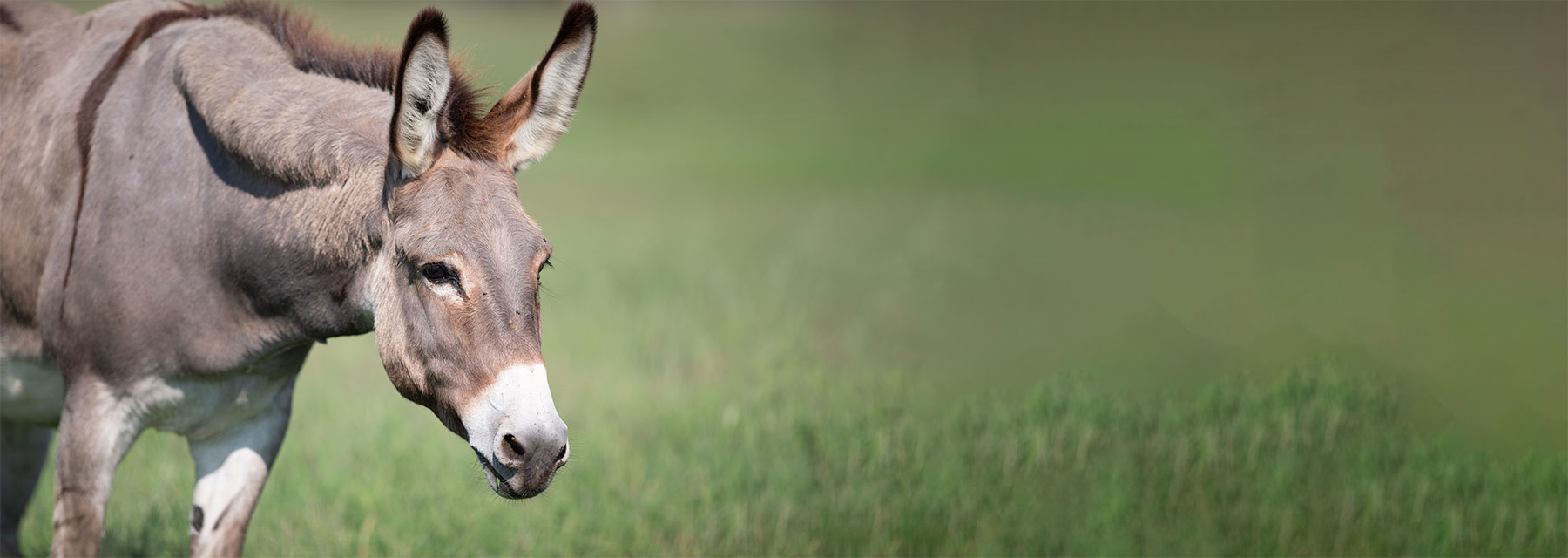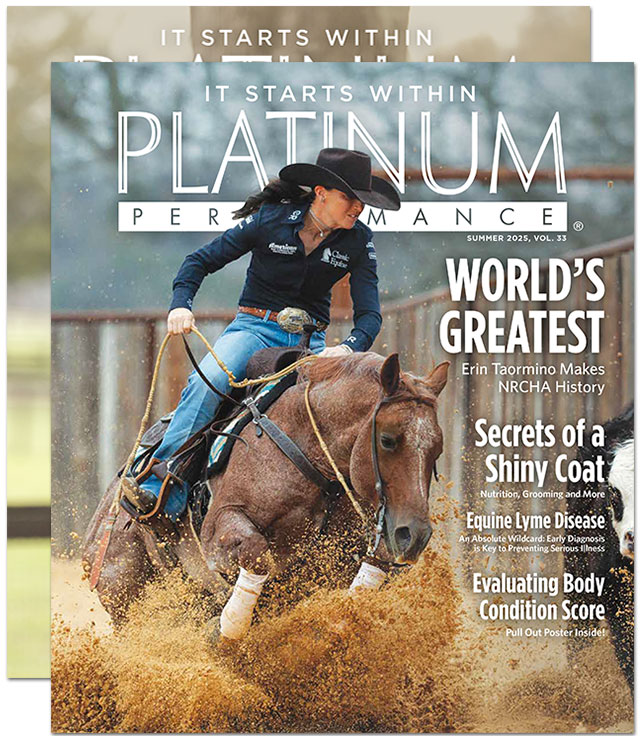Dr. Amy McLean is Helping The World Better Understand and Appreciate Mules and Donkeys, From Their Endearing Nature to Surprising Versatility
Dr. Amy McLean is a self-proclaimed “daughter of city slicker parents.” The product of a Manhattan-born mother and a father with his roots in urban Atlanta, Georgia, “country” didn’t run naturally through her veins. Her stars were changed, however, when her father one day looked at her mother and said, “We’re moving to the country, and we’re going to start a donkey farm.” A typical household conversation it was not, but the McLeans are anything but typical. “I guess you could say my parents were spontaneous people,” says Amy looking back with a laugh, remembering her father’s spur-ofthe- moment suggestion that forever altered the course of her life.
The McLean’s made their farm a reality and began acquiring mules and donkeys to fulfill their dream. It was in 1988 when their aptly named foal “ ’88” developed klebsiella pneumonia, spurring endless questions from the family and treating veterinarians — how do horses typically respond to the various treatments available and how would mules and donkeys differ? The simple answer was they just didn’t know. In fact, no one did. Not much was understood about the intricacies of mules and donkeys at the time. From their dietary requirements to their response to medications and therapies, mules and donkeys were an enigma; a hearty, long-eared enigma who puzzled many veterinarians of that time. It was this experience that sealed the soon-to-be Dr. Amy McLean’s fate, pointing her toward a career in mule and donkey research that has answered questions, taken her around the world and improved both the lives and understanding of these beloved creatures.
As Dr. McLean began studying for her PhD at Michigan State University, her parents’ spontaneously-acquired farm grew to two properties and nearly 60 head of mules and donkeys. This passion project had become the McLean family’s life and life’s work. Dr. McLean, meanwhile, had goals of changing the perception of mules and donkeys while simultaneously improving their welfare in developing countries where these animals are relied upon to help sustain human life. A coveted fellowship position soon took her to West Africa where, with limited electricity and refrigeration, she and her team conducted nutritional studies to better understand how donkeys are able to survive in such harsh environmental conditions. She went on to study insulin resistance in donkeys, learning that metabolic concerns run rampant in the species. Her work then led her to the area of exercise physiology, where she looked at how donkeys are trained, what jobs they’re asked to perform and how the weight they carry should be ideally placed to preserve their bodies and minimize injury and breakdown. Thanks to that once-in-a-lifetime fellowship and her time in West Africa her passion was further ignited and her goal of attending veterinary school morphed into a career in mule and donkey research in the halls of the University of California at Davis and around the world, where she quite literally has transformed our knowledge of these long-eared animals. In 15 years, Dr. McLean has traveled to over 25 countries to study mules and donkeys, including many remote or underdeveloped locations reliant on these animals for human survival. Finding a better way to raise, feed, care for and treat the mules and donkeys serving these rural and often poverty-stricken areas can quite literally change lives. “I’ve been very fortunate that this path has taken me to all of these incredible places,” says Dr. McLean. “I’ve met so many wonderful people along the way. We keep discovering there’s more questions than there are answers, so it’s really been exciting to be somewhat of a pioneer for donkey and mule research.” Dr. McLean is humble to her core and has truly made an undeniable impact on the animals she loves.
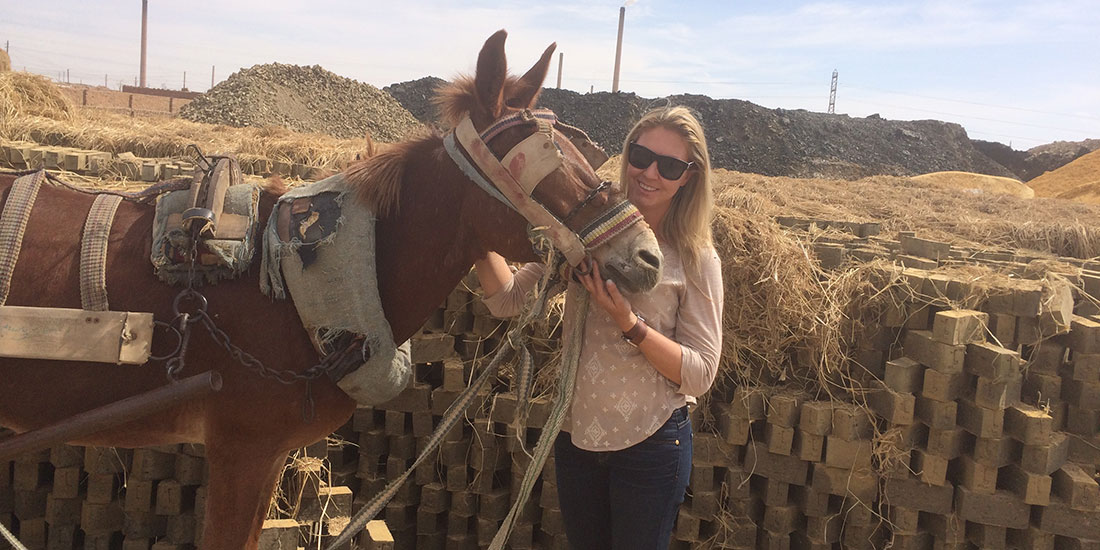
A coveted fellowship position took Dr. Amy McLean to West Africa where she and her team conducted nutritional studies to better understand how donkeys are able to survive in such harsh environmental conditions.
COURTESY PHOTO
“The biggest problem currently presenting itself is that we’re overdoing it with the wrong nutrition while underdelivering the right nutrition for mules and donkeys.”
Amy McLean, PhD, Assistant Professor of Teaching Equine Science, UC Davis Animal Science
A Breadth of Discovery
In recent years Dr. McLean’s work has expanded drastically. “A few years back we did some interesting research in Italy with dairy donkeys, looking at how to improve their milk production, quality and composition using nutrition. We’ve done vitamin E and selenium studies that have shown us that donkeys straight off the barren terrain in California’s Death Valley, for instance, have higher levels than supplemented horses do. We’ve also looked at the effectiveness of conventional dewormers in mules, and this week we’re doing a pharmacology study looking at a topical anti-inflammatory and analgesic that could help ease pain in donkeys and be a lot easier to administer than an injectable or oral,” she explains.
Through her extensive research, Dr. McLean has learned that although mules and donkeys have made their way through history carrying the load of civilization, their heartiness and resilience has often been mistaken as requiring very little care and nutrition. “They still colic, they still have gastric ulcers and joint problems just as horses do,” points out Dr. McLean. “I think people are just starting to pay attention to this. They’re tough and sturdy, but that doesn’t mean they’re always comfortable. They do a great job of hiding their pain, and we need to take better care of them.”
Dr. McLean is a tireless advocate for feeding and nourishing mules and donkeys more proactively, providing a quality diet and regular preventive veterinary care. “I try to never cut corners or to ever think, ‘Oh, it’s a mule. It’s a donkey. I’m just going to feed them straw.’ I want to treat them similar to a horse but modify how much I’m suppling. Good quality products are a huge key to success in keeping both mules and donkeys healthy and sound, similarly to a horse. This is one of the reasons I’ve fed my mules Platinum CJ for so long. These are big animals, they’re performance animals and I know their potential for longevity. I want them healthy for the long haul.” Those aspects of health include both joint support and gastrointestinal function. “We’ve seen gastric ulcers in donkeys just living on a pasture who shouldn’t have any real stress in their lives. You take this animal that hides its pain and stress so well, then you start trailering them to shows or trail rides. In addition to that, their training regimen can be rigorous — our mules are spending the majority of their time exercising at a trot, and we’ll go out and gallop for 30 to 40 minutes as we get them in shape for our events. You can just imagine the potential impact to the gastrointestinal system. I think if we can provide probiotics, overall wellness support and ingredients to help their joints as a start, then have a more preventative approach versus a reactive approach, it will be of great benefit.”
While mules and donkeys are hearty creatures by nature, little has been known until recently regarding their chemical makeup and how they may differ from the horse in key areas. “The biggest problem currently presenting itself is that we’re overdoing it with the wrong nutrition while underdelivering the right nutrition for mules and donkeys,” points out Dr. McLean. “They can be sensitive metabolically, and again, we know that we’re overlooking gastric ulcers in high numbers because these animals are just so tough in how they handle pain.” Mules and donkeys, however, do have “tells,” per se, that can help alert owners and riders to the presence of gastric ulcers or other problems. “You’ll see them constantly chewing, they’ll go off feed like a horse will, they’ll continuously blink and they’ll exhibit some other behavioral changes like rolling that can be a red flag.”
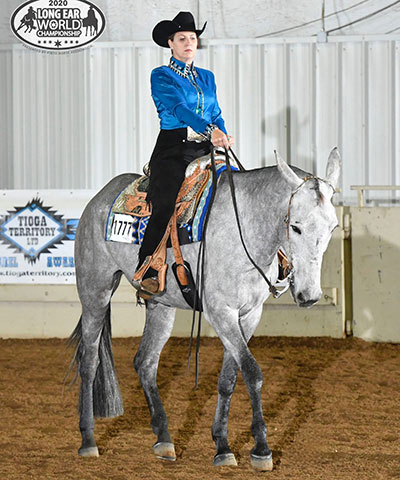
“If they respect you and you have that bond, they will do anything for you.”
Amy McLean, PhD, Assistant Professor of Teaching Equine Science, UC Davis Animal Science
All-Around Athletes
Mules and donkeys have been used for thousands of years to assist in the daily lives of people around the globe, but, over time, riders have recognized their athletic ability and versatility as well. “Mules can jump, excel in a reining pattern, work in the cutting, perform in dressage and pull in the driving. They’re not just beasts of burden, they’re incredibly versatile animals capable of a show career,” says Dr. McLean. She herself has seen tremendous success raising, riding and showing mules in numerous disciplines. “When horse people see their first mule show, their response is usually, ‘This is amazing. This is so much fun,’ ” observes Dr. McLean. “Mules aren’t as specialized as our horse world has gotten. You literally have to do everything, and, because of the mule’s athletic ability, they can successfully participate in so many events.” Mules are the ultimate all-around show animal who innately want to please and deliver what is being asked of them. “I love the mules’ personalities,” says Dr. McLean. “If they enjoy showing, if they like you, then they bond to you like a dog. Most horses will work for many riders, but the mules, if they don’t like what they’re doing or they don’t like you, you won’t get much out of them,” she says laughing. The opposite is equally as true. “If they respect you and you have that bond, they will do anything for you.” As Dr. McLean and other mule pilots have found, there are challenges in training mules that include the patience it takes to see things through. “Our all-around mules can take four to five years to train, and there are challenges in keeping them soft and flexible. You have to be more patient, but their longevity is remarkable.” Dr. McLean and her fellow mule riders find that mules deliver pure fun in a show setting. “Maybe our dressage is at a training level or first level, but to have half a donkey out there extending their trot and doing a shoulder-in when their natural response is to push against pressure, that’s incredible.”
What is the Difference Between a Donkey and a Mule?
Horses and donkeys are two separate species that evolved from a common ancestor. Both belong to the Equidae family and the genus Equus.
Donkeys originated in Africa and descended from the African wild ass. They evolved in a warmer climate and have a different number of chromosomes than a horse.
Mules are the offspring of a male donkey and a female horse and often have inherited the best qualities of both species.
Hinnies are the offspring of a male horse bred to a female donkey. They are slightly smaller than mules.
Learning, Sharing and Making Change
To Dr. McLean, the greatest focus should undeniably be on education. She has committed an incredible amount of her time to properly communicating the findings of mule and donkey research. She has realized that yes, we can certainly learn and discover, but is the information making it to the owners, riders and people responsible for feeding and caring for these mules and donkeys? One project that has Dr. McLean’s focus is the Equitarian Initiative, with which she has been an active board member since 2015. “We work primarily in Central and South America, in West Africa and on some of the Native American reservations here in the U.S. We originally offered only more reactive care — going in, supplying veterinary care, vaccines and things like that. As things evolved, however, we learned it is really more about community education. Our new approach is to partner with different community leaders and provide educational opportunities. We don't see the same mules and donkeys coming back each year with the same health conditions like saddle sores and harness problems anymore. We’ve found that by altering human behavior and practices with these animals, even by just a little bit, we can go so far in improving health and welfare and allowing these animals to more comfortably work to help provide food and income for some of the poorest people in the world.” It’s an exceptional initiative bringing much-needed change to communities in underdeveloped nations who rely on mules and donkeys to survive.
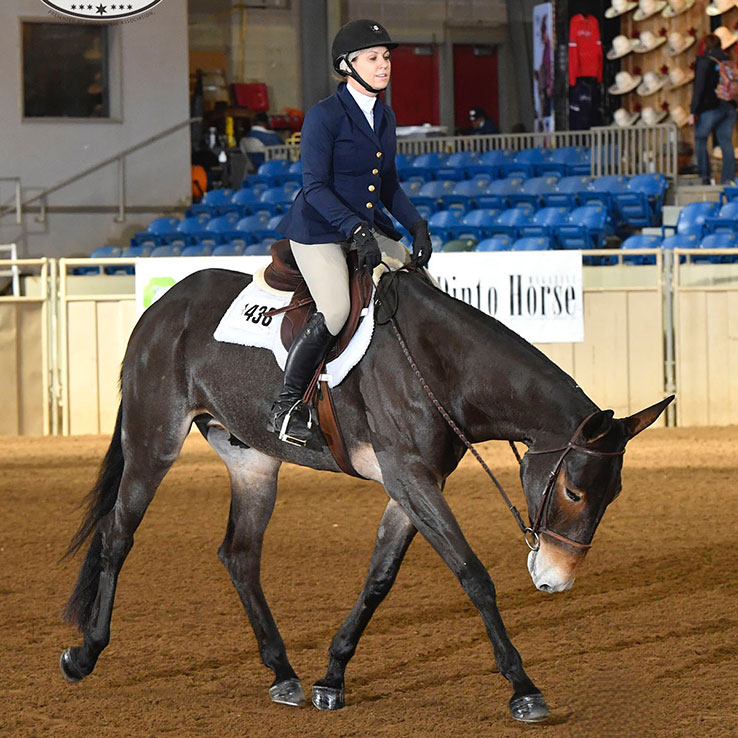
Marvels of the Mule
- Mule owners report that mules tend to not overeat, even given the opportunity.
- There is a lower incidence of insulin resistance and metabolic health issues in the mule population.
- Mules are versatile athletes. Mules in training or heavy exercise may thrive on special dietary attention and supplementation to support athleticism, muscle recovery and longevity including the addition of alfalfa, flax oil, joint-supporting nutrients, probiotics and ulcer support formulas and antioxidants like vitamin E and selenium.
- Mules in training that are also growing may be more challenging to keep weight on, so increase forages and healthy fats as needed.
- It is typically still recommended to treat mules nutritionally like their donkey parent but consider age and activity level of the mule and, if known, their genetic background.
FUN FACT
Harry Truman once said “My favorite animal is a mule. He has more horse sense than a horse. He knows when to stop eating, and he knows when to stop working.”
In the Name of the Ears
Harry Truman once said “My favorite animal is a mule. He has more horse sense than a horse. He knows when to stop eating, and he knows when to stop working.” Perhaps he was spot on. Mules and donkeys have powered progress around the globe for thousands of years and only now are we coming to better understand their needs, the nuances of their personalities and their full potential as performance and leisure animals. They’re wise, rooted in their ways and can thank those like Dr. Amy McLean and her colleagues for dedicating their lives to improving the understanding, treatment, nourishment and appreciation for these endearing and multifaceted animals. Long ears, deep souls, big hearts and unwavering try all come together to define these wise and quirky creatures. Their future, like their minds, are bright and full of promise, whether that future is chasing an all-around show title or working under a harness to help cultivate the land in West Africa. They’re owed respect, care and a tip of our collective hats for all that they’ve contributed.
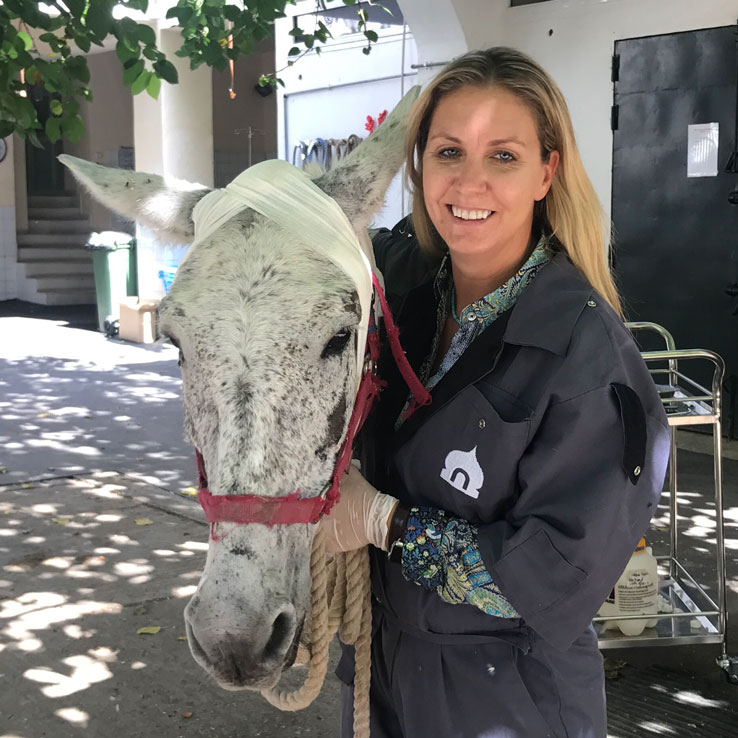
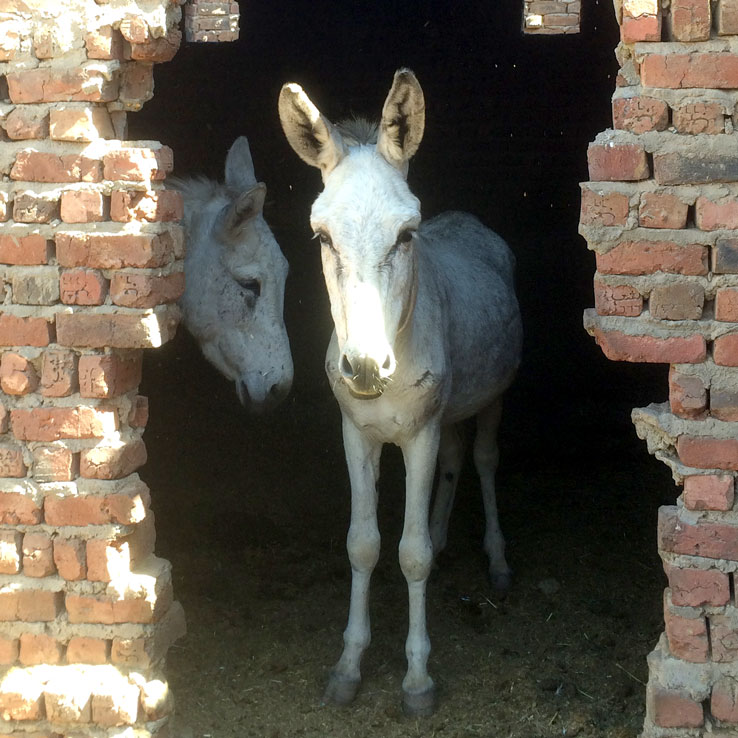
Health Issues Unique to Donkeys and Mules
Donkeys and Hyperlipidemia
Hyperlipidemia — excess fat in the blood — is a health issue in donkeys that can be fatal. It is the main cause of death in donkeys. It can occur when an animal goes off feed and goes into “negative energy balance,” where more energy is being used than what is being consumed. In this state, the body mobilizes fat reserves for energy to feed essential organs. Under normal circumstances, hormones are in place to switch off the fat mobilization. However, in donkeys, the fat release may not be able to be stopped and excess fat circulates in the blood, measured as triglycerides. If high triglyceride levels persist, hepatic (and renal) lipidosis may develop causing organ failure and death.
Maintaining a healthy body condition can help to avoid complications with hyperlipidemia. Avoiding stressful situations or anything that will put a donkey off feed is paramount, as is taking great care when adjusting feed intake to normalize body weight. Overweight animals should be put on a gradual weight loss plan, avoiding a “crash diet” or a hugely restrictive feed intake. Weight loss should be done very gradually in donkeys, making diet modifications slowly over 4 to 6 weeks to avoid putting the body in starvation mode and at risk for liver damage.
Colic and Ulcers
Both mules and donkeys can colic yet they tend to show signs when the disease is more advanced. Dietary changes should be made slowly while the animal is watched closely for behavioral changes. Mules tend to show signs of acute colic quicker than donkeys. Watch for behavioral changes, such as excessive rolling, grinding teeth, tail switching or latching upper incisors onto permanent objects; all of which may indicate the presence of gastric ulcers. Both mules and donkeys, like horses, can be highly susceptible to ulcers.

by Jessie Bengoa,
Platinum Performance®
